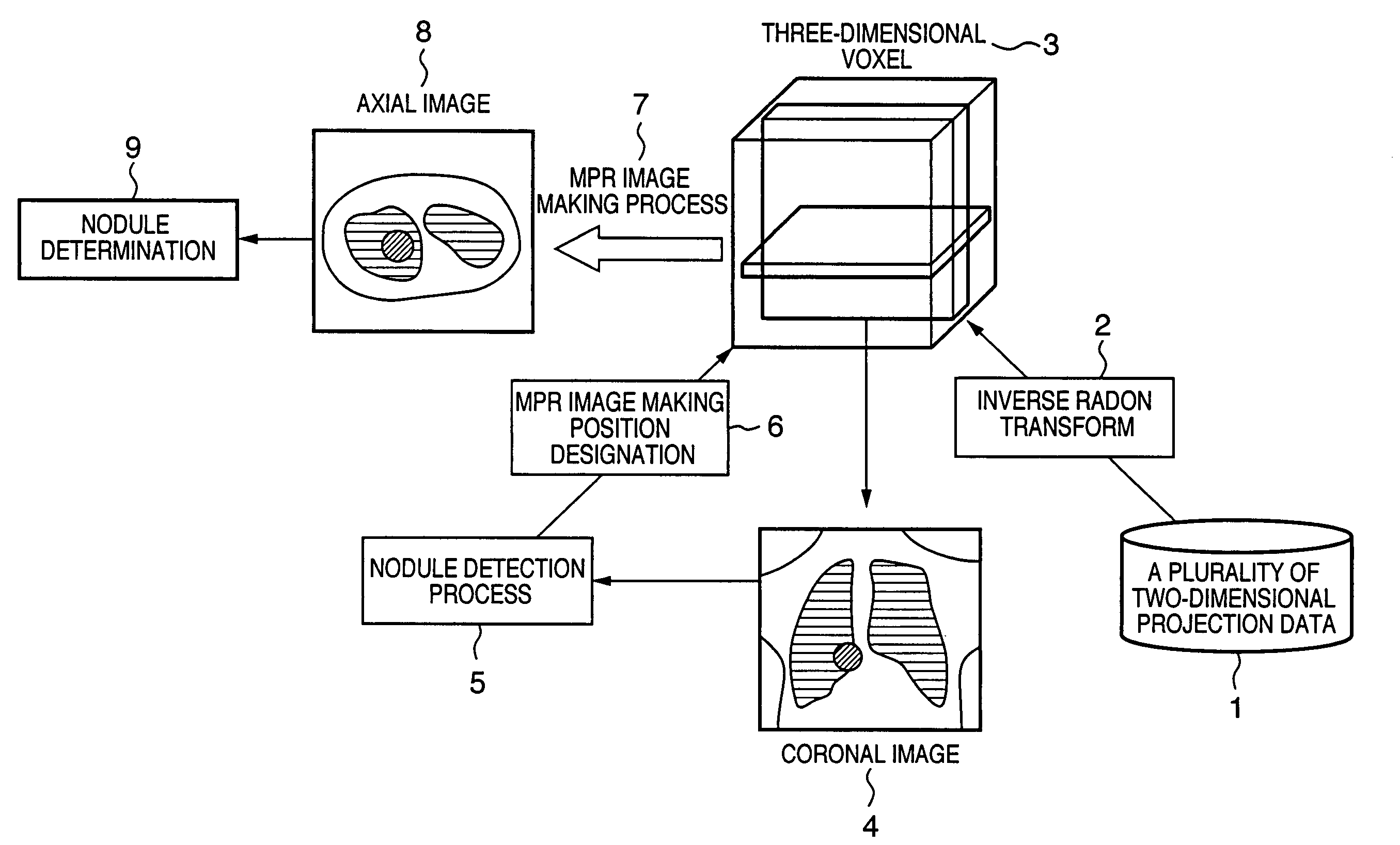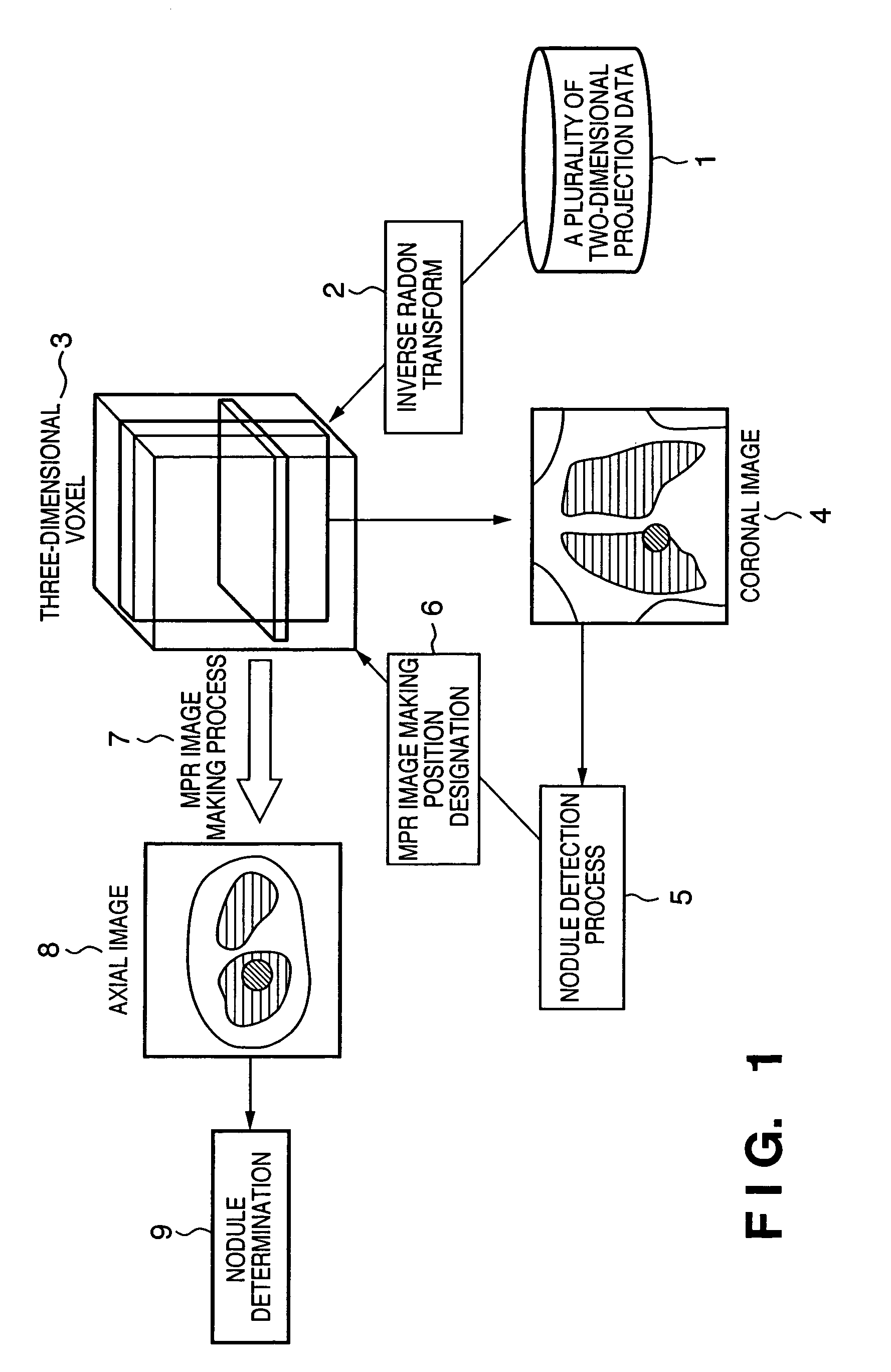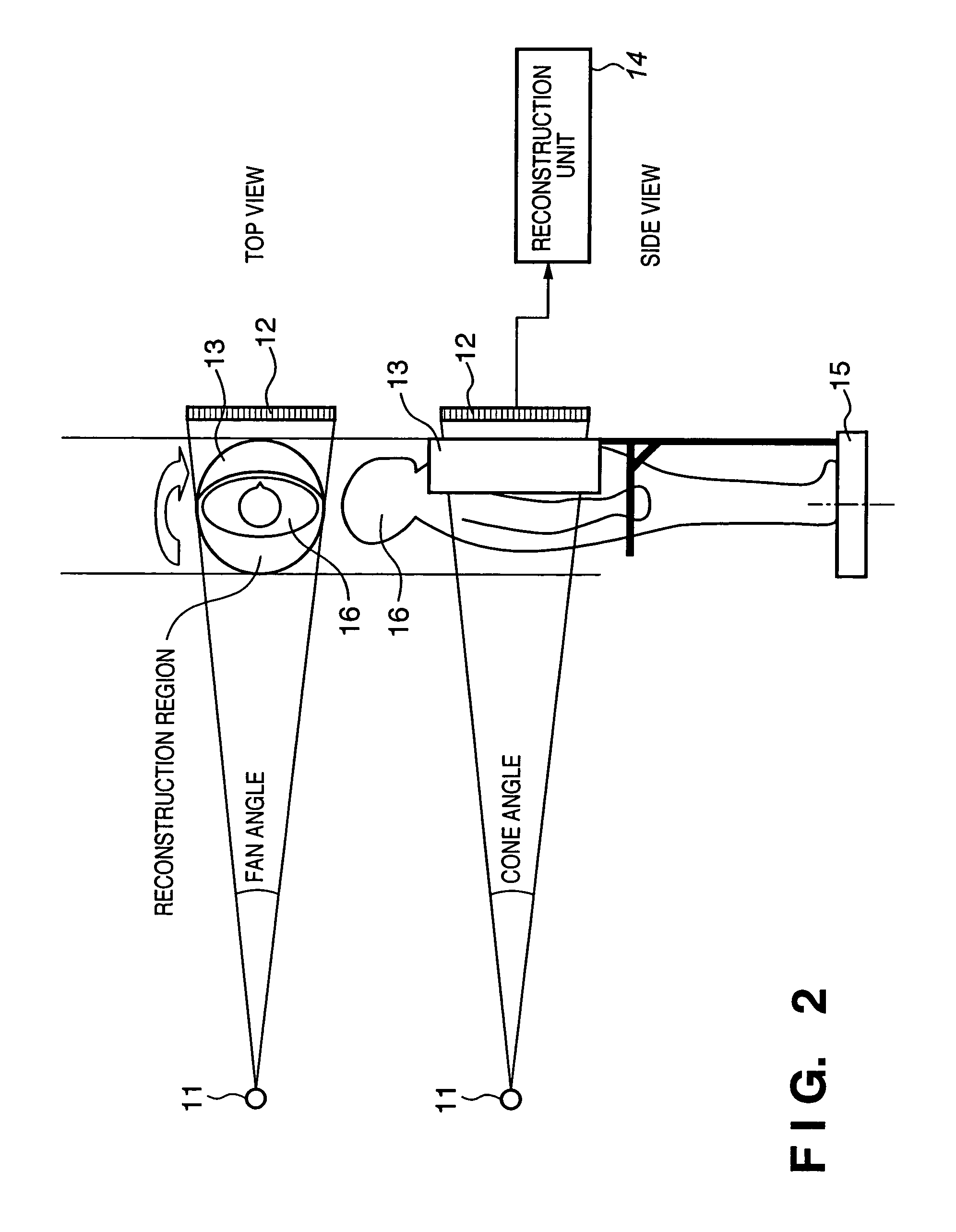Image processing apparatus and method, and program
a technology of image processing and apparatus, applied in the field of image processing apparatus and method, and program, can solve the problems of no advantages, no artifacts generated due, and imperfect roughly isotropic images to be constructed
- Summary
- Abstract
- Description
- Claims
- Application Information
AI Technical Summary
Benefits of technology
Problems solved by technology
Method used
Image
Examples
Embodiment Construction
[0070]Preferred embodiments of the present invention will now be described in detail in accordance with the accompanying drawings.
[0071]The present invention relates to a radiation image sensing technique for imaging a radiation distribution in a subject using radiation such as an X-ray CT apparatus that makes an image using radiation such as X-rays and the like. More particularly, the present invention relates to a cone beam CT apparatus having a computer diagnosis aiding function or an image processing technique having a computer-aided diagnosis processing function from cone beam CT images.
[0072]FIG. 1 is a schematic view for explaining the overall picture of an image processing system according to the present invention.
[0073]For example, a 3D voxel 3 as a 3D image of a subject is reconstructed by computing inverse radon transforms (2) of a plurality of 2D projection data through 360° (or 180°+fan angle) of the subject obtained from a CBCT imaging apparatus.
[0074]In FIG. 1, images...
PUM
| Property | Measurement | Unit |
|---|---|---|
| partial angle | aaaaa | aaaaa |
| fan angle | aaaaa | aaaaa |
| size | aaaaa | aaaaa |
Abstract
Description
Claims
Application Information
 Login to View More
Login to View More - R&D
- Intellectual Property
- Life Sciences
- Materials
- Tech Scout
- Unparalleled Data Quality
- Higher Quality Content
- 60% Fewer Hallucinations
Browse by: Latest US Patents, China's latest patents, Technical Efficacy Thesaurus, Application Domain, Technology Topic, Popular Technical Reports.
© 2025 PatSnap. All rights reserved.Legal|Privacy policy|Modern Slavery Act Transparency Statement|Sitemap|About US| Contact US: help@patsnap.com



